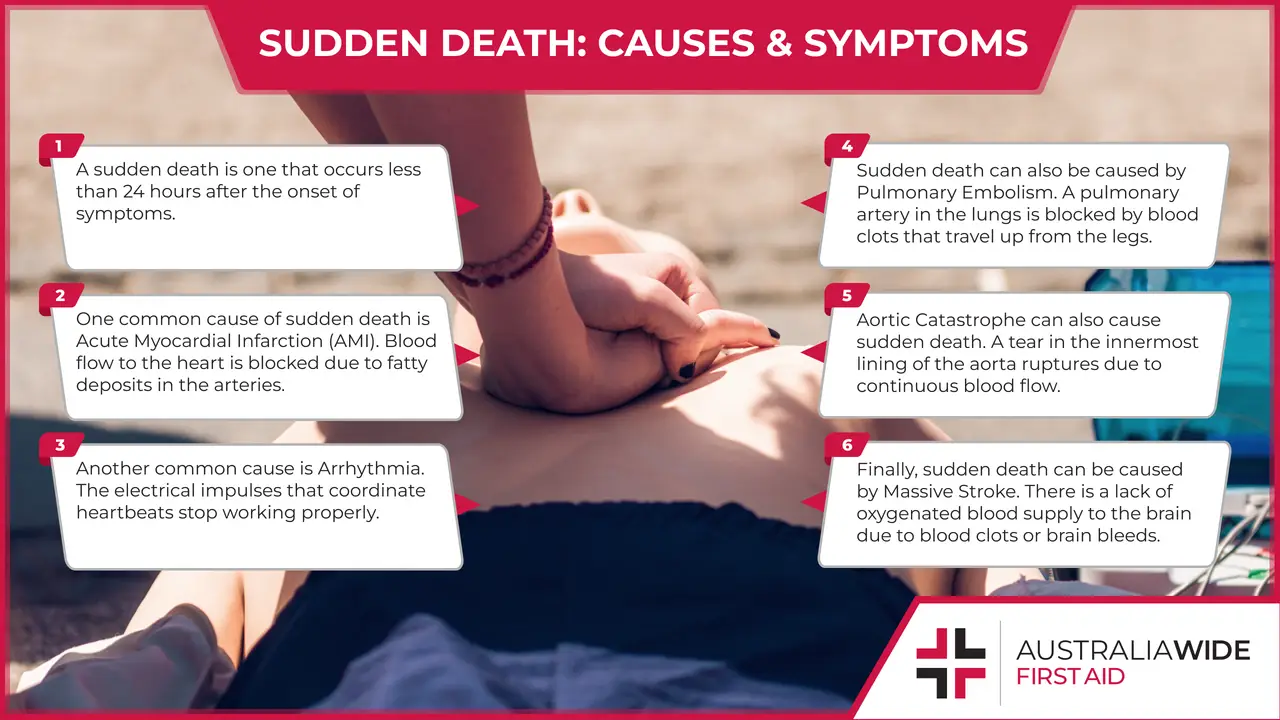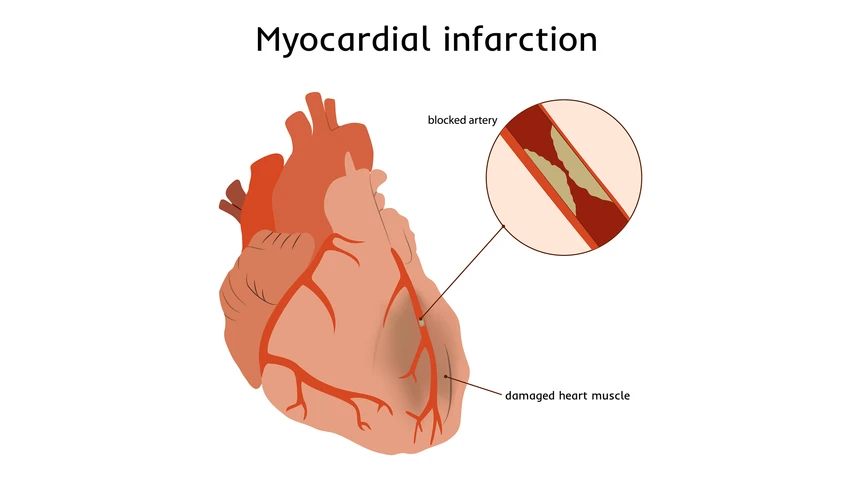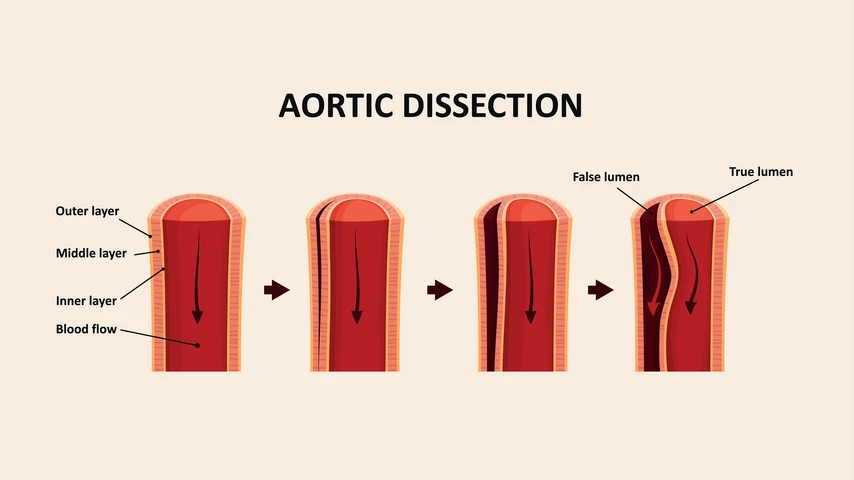Sudden Death: Causes and Symptoms


A sudden death is one that is unexpected. The World Health Organisation (WHO) defines sudden death as a “non-violent death occurring less than 24 hours from the onset of symptoms”.
Natural causes are the main causes of sudden death, with cardiovascular diseases accounting for up to 90% of sudden deaths globally. When the cardiovascular system is the cause of the sudden death, it is referred to as sudden cardiac death. In Australia, cardiovascular disease is the biggest cause of early and sudden death.
Baker Heart & Diabetes Institute, an Australian medical research institute in Melbourne, stated that sudden cardiac death is a major killer of Australians under 50, and that men are five times more likely to be affected.
Today, we are going to look at 5 common causes of sudden death. It is important to understand these causes, so that you can provide effective first aid treatment, and reduce the casualty's risk of serious complications.
Arrhythmia is a medical term for an irregular heartbeat. Heart arrhythmia occurs when the electrical impulses that coordinate heartbeats stop working properly, causing the heart to beat faster, slower or in an irregular pattern.
Signs and symptoms of someone experiencing arrhythmia include:
Severe cases of arrhythmias are a common cause of sudden cardiac death. Recognising early those exhibiting the signs and symptoms of arrhythmias and taking appropriate immediate actions can save lives. Every minute delaying defibrillation reduces survival chances by 10%. Early defibrillation and delivery of proper chest compressions improve chances of surviving.
To prevent arrhythmias, eat a heart-healthy diet, avoid tobacco smoke, reduce high blood pressure, control cholesterol levels and enjoy regular physical exercises.

An acute myocardial infarction is commonly known as a heart attack. It occurs when the blood flow to the heart is drastically reduced or blocked by a buildup of fatty cholesterol deposits in the coronary arteries. Over time, the plaque builds up and rupture, occluding the blood flow. With reduced blood flow to the heart muscles, they receive inadequate oxygen. When this prolongs and more heart muscles are affected, many of the cells die, resulting in an AMI.
Signs and symptoms of someone experiencing AMI include:
If you see someone having a heart attack, follow the seven steps of the basic life support flowchart (DRSABCD), 000 (Triple Zero) for help as early as possible, and call for someone to being an A.E.D. Also make the casualty comfortable by providing reassurance and sitting them on the floor against a wall. This is absolutely crucial for everyone to know.
More information about the differences between heart attack and sudden cardiac arrest can be found in our Resource Library.
Pulmonary embolism occurs when a pulmonary artery in the lungs is blocked by a deep vein thrombosis (blood clots) that travel from the legs to the lungs. They block the pulmonary arteries, preventing blood flow through the lungs. This reduces the lungs ability to supply oxygen to the brain and rest of the body. Risk factors that cause blood clots to form are being overweight or pregnant, smoking and long periods of immobilisation or inactivity, for example, bed rest after a surgery.
Signs and symptoms of someone experiencing PE include:
Prevent pulmonary embolism by preventing deep vein thrombosis or blood clots in the deep veins in the legs. Some measures include:

It is also known as an aortic dissection which refers to an aortic aneurysm that has dissected. Chronic aortic aneurysm and hypertension eventually lead to the tearing of the innermost layer of the aorta. Constant contraction of the heart forces more and more blood between the arterial linings, resulting in the separation or dissection of the layers. This can ultimately cause the aorta to rupture (burst). Aortic dissection occurs mostly in men, aged 60 to 70.
Signs and symptoms include:
Aortic dissection is life-threatening and is a medical emergency. It is most often confused with a heart attack. Early diagnosis and treatment are vital. If you see someone experiencing severe chest pain, sudden shortness of breath with symptoms of a stroke, call 000 (Triple Zero) for help immediately and ask someone to fetch a defibrillator. You should also comfort the casualty by providing reassurance and sitting them on the floor against a wall. Additionally, you should loosen any of the casualty's tight clothing, as this can help lower their heart rate and take pressure off the aortic valve. To prevent aortic catastrophe, take care of your heart by controlling your blood pressure, no smoking, maintain a healthy weight and exercising regularly.
A massive stroke occurs when there is a lack of oxygenated blood supply to the brain due to blood clots occluding the arterial blood flow or when a blood vessel in the brain ruptures and bleeds into the brain. The loss of supply of oxygen and nutrients cause the brain cells to die and result in permanent damage.
In Australia, at least 3 in every 200 Australians have had a stroke. Everyday, 23 Australians die from a stroke. A third of those who survive suffer long-term disability and require help with moving, talking and self-care.
Signs and symptoms include:
If you see someone exhibiting signs of stroke, call 000 (Triple Zero) for help immediately. Also help the casualty maintain their body temperature and adopt a position of comfort, wherein their airway does not become obstructed. Likewise, provide the casualty with reassurance, and roll them into the recovery position if unconscious and breathing. A stroke is a medical emergency. Any delay in treatment can result in death or long-term disabilities and complications.
More than 4 in 5 strokes are preventable. Prevent stroke by keeping a healthy lifestyle by improving diet with healthy fats and low saturated fat, avoid smoking and maintain a healthy weight with regular exercise.
Many times, these symptoms go unnoticed and undiagnosed. Some people are asymptomatic, showing no previous signs before they suddenly collapse.
Thus, it is important to be equipped with the skill of performing CPR and using the defibrillator in any circumstances that may save the lives of your loved ones or the people around you.
Learn CPR and provide First Aid with Australia Wide First Aid. Book a date today!
Disclaimer: This article is for informational purposes only. It does not constitute, replace, or qualify as any form of first aid training.

May 1, 2025
Pterygium, also known as surfer's eye, is an ocular surface disease characterised by a growth of limbal and conjunctival tissue over the cornea. Fortunately, you can practice many eye health habits to help prevent the development of pterygium and other risks.

April 3, 2025
Tuberculosis is a severe bacterial infection that mainly affects the lungs and other parts of the body, including the nervous system. This contagious disease can quickly spread in crowded areas when an infected person coughs, talks, or sneezes.

February 13, 2025
Melioidosis is a bacterial infection caused by Burkholderia pseudomallei, a microorganism found in soil and water. This infection is often underdiagnosed due to symptoms mimicking many other illnesses. As such, awareness is critical for those living or working in affected regions.